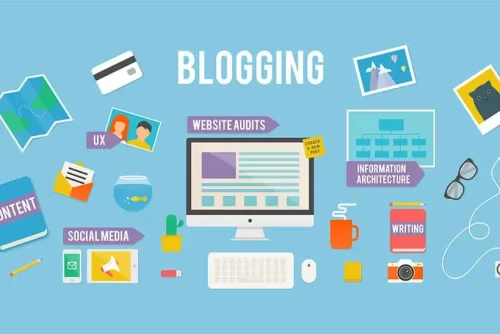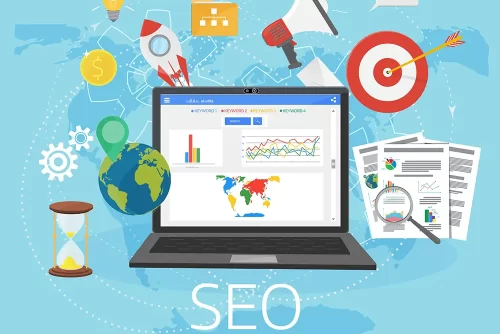Recent data gathered by Chartbeat shows that more than half of all visitors to a website will leave the site they’re on within 15 seconds. Why? There are several reasons, and below are a few of them—along with some potential remedies:
AI + Human Edited Content Creation.
Only $0.01 per word!

Reason #1: The Site Is Not What They Expected
When your product or service doesn’t deliver what you guarantee on the landing page, this can happen. If your visitor has a problem, and you offer a spectacular solution but don’t deliver, the customer will not hesitate to click on the “back” button.
Solution: Don’t promise what you can’t deliver. If you promise an incredible solution to the customer’s problem, make sure the product lives up to the hype.
Reason #2: There’s Bad Navigation
Website users can be easily distracted. They will leave your website if they can’t find what they want quickly. After all, they don’t want to waste time if it’s clear another site will be better.
Solution: When you set up the navigation for your site, consider the needs of your users. Want them to purchase something from your site? Then you have to make the purchase button noticeable and easy to activate. Want them to explore your site? Add some cues that show them the items they may want to consider.
Reason #3: The Load Time Is Too Slow
According to research by Kissmetrics, approximately 40% of all visitors will leave a site or blog if it doesn’t load in three seconds or less. Nearly 80% of users indicate that they usually leave an online store if the site performs too slowly. Approximately 44% of them will, in turn, relay a bad experience to a friend, which can be disastrous for your business. In addition, your SERP rank can be negatively affected by load times that are too slow.
Solution: Don’t focus only on aesthetics, and don’t delay optimizing your site’s load performance. Adding more plugins is nice, but they won’t be effective if they produce poor results because they slow down your site’s performance.
Problem #4: The Content Is Poor Quality
Hiring competent and professional copywriters and updating your web content on a regular basis should be top priorities for marketers and publishers. Readers expect updated content every time they visit a site.
Solution: Hiring a professional copywriter is the most logical solution. There are plenty of content writing services out there, and they are well worth the cost.
Problem #5: The Site Has an Old-Fashioned Design
Appearance is important for websites. Dr. Elizabeth Sillence of Northumbria University conducted a study where she asked viewers to indicate whether or not they trusted a particular website. Over 94% of users said that the main reason they distrusted particular websites was due to the design.
Solution: Choose your navigation type and color scheme carefully. These decisions and more affect user experience and perception of the site. Most online visitors despise websites that are slow and confusing.
Problem #6: There Are Too Many Ads
Advertising is important, especially if your website is very ad-reliant. However, that doesn’t necessarily mean emphasizing ads over the actual content. With banner ads being used less often, it is not recommended to bury your content in ads. That may have worked in the early days of the Internet, but it doesn’t work anymore.
Solution: Ads can be a nuisance when used too often. Ad blocking has grown by 41% across the globe in the past year alone, costing publishers close to $22 billion. Don’t overwhelm users with advertisements. Instead, try some other ways to generate revenue, like sponsored posts and reviews or affiliate marketing. With these, you can develop new income streams without annoying your readers by subjecting them to a large number of ads.
Problem #7: The Site Is Too Cluttered and Unreadable
Cluttered websites are not only unprofessional, but they are also confusing and even exhausting to readers. This increases the likelihood that they will never come back to your site or blog, meaning you will get a higher bounce rate and a poorer page rank.
Solution: Do not cram a large amount of information on one page. Instead, rate the content in order of importance. For example, if you want visitors to sign up for your newsletter, make sure the call to action button is the focal point of the web page. Make it as easy as possible for users to do what you want them to do.
Problem #8: There Are Auto-Play Videos
To many visitors, nothing is more annoying than when a video starts to play as soon as the user lands on a page. Visitors to your site want to be the ones deciding what to look at and when, and many of them will click on the “back” button when they reach an auto-play video.
Solution: With this one, there is a simple solution. Don’t include these types of videos on your websites. Many users who encounter this kind of video on your site will never return to it in the future.
Problem #9: There Is No Call to Action
If the call to action isn’t precise and clear, then your readers will do nothing. If you’ve been successful at having these people stay with you until the end but have no call to action, you’re subjecting yourself to fewer leads—because, quite simply, you didn’t ask for them.
Solution: Decide what course of action you want the readers to take. Download something? Click on a link? Buy something? Whatever it is, ask them to do it. This requires the use of a call to action.
Problem #10: The Site Is Non-Mobile-Responsive
Mobile devices are becoming more and more popular, so making your website mobile-friendly is critical.
Solution: Use a more responsive design. This guarantees that the content you use will be the same regardless of the platform, and will give your readers the information that is essential to them—which will decrease your bounce rate.
Final Thoughts
Using cluttered pages filled with ads is bad for business. Users will not only leave these types of sites, but they will also tell others to do the same. With a few helpful tips, however, you can make sure that people who visit your site will become your customer, whether that’s today or sometime in the future.
100% human-written content by native English writers
OUR BLOG



